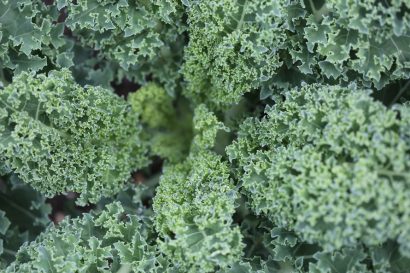Do You Have an Eye for Nutrition?
Written by Dr. David Evans Last modified on August 6, 2018
Pretty much every day of the week I like to have a salad with my lunch. Nothing fancy, just a basic mixed salad with some Italian or balsamic dressing. I enjoy it, but more than anything, it’s my excuse for having the steak, chicken or pork that goes along with it, which I typically expertly grilled the night before. Well I was recently introduced to something that has completely changed up my salad game: kale. It’s good for cardiovascular health, it’s packed with antioxidants that help protect against cancer, and it’s loaded with calcium and vitamin C. It really is a super food.
I know, I know, I’m late to the party. Everyone already knows about the many health benefits of kale. Well what you may not know is that it’s actually great for vision health as well.
Kale is packed with lutein and zeaxanthin which are essential in helping protect the eyes from the damaging effects of free radicals. Kale has particularly high levels of lutein and zeaxanthin and has been linked with lowering the risk of developing age-related conditions like macular degeneration (AMD) and cataracts. Seeing that I’ve just celebrated my 60th birthday, it appears I couldn’t have found a better time to form a love affair with kale.

You might not be quite ready to jump aboard the kale bandwagon just yet, but the good news is there are a number of other dietary and nutritional changes that you can make to help support your eye health.
Other leafy greens might not pack the same healthy punch as kale, but they can offer similar protections against AMD and cataracts. So if kale doesn’t quite do it for you, give spinach or collards a try, also high in lutein and zeaxanthin content.
Omega-3s From Cold Water Fish – Oil for the Eyes
Salmon is not only a delicious fish, it’s loaded with omega-3 fatty acids that have been shown in studies to protect against dry eye and limit your risk of developing age-related eye diseases like AMD. If salmon isn’t your cup of tea, you can substitute other cold-water fish like sardines, tuna or mackerel.
Whole Grains Lower the Risk Too
Quinoa, brown rice and other whole grains contain vitamin E, zinc and niacin, all of which help to support overall eye health in addition to reducing your risk of AMD as you get older.
Black eyed peas, kidney beans, lima beans and other legumes are excellent sources of zinc and bioflavonoids that help protect the eyes against light damage to the retina. They also have the added benefit of reducing your risk for developing AMD and cataracts.
Don’t Forget About Vitamin C
Oranges and other fruits and vegetables packing vitamin C and antioxidants are great for protecting the eyes and boosting function. The eyes need high levels of vitamin C for optimal health, so a diet that includes fruits and vegetables is great for enhanced vision longevity.
These are just a few of the healthy dietary choices you can make that promote vision and general health. Speak with your eye doctor or consider meeting with a nutritionist to learn more about what sort of dietary changes you can make to help improve your health and well-being. There are also a number of eye nutrients on the market that contain the ingredients we discuss here; make sure your eye vitamins have a healthy dose of all of the above.
To read more about the effects of diet and nutrition on your eyes, you can check out the American Optometric Association’s article here.
